Introduction To Composite Fillings
Composite fillings, also known as tooth-coloured fillings, are widely used in modern dentistry.
These filling material blend in with natural teeth, making them a popular choice for both cosmetic and functional reasons.
Brief Overview Of What Composite Fillings Are
Composite fillings are crafted from a blend of plastic and ceramic compounds. This mixture gives the filling material a natural appearance that closely matches the colour of your teeth.
They are versatile and can be used to repair teeth affected by decay, minor chips, abrasion wear and in some cases cracks and fractures.
These filling materials are applied in layers and hardened using a special blue light, making them strong and durable.
Importance Of Dental Fillings In Maintaining Oral Health
Dental fillings are essential for maintaining oral health. When cavities or tooth decay occur, fillings restore the tooth’s structure and function.
Without treatment, cavities can worsen, leading to more pain, sensitivity and serious dental issues like infections and tooth loss.
By filling cavities, you protect the tooth from further decay and maintain the overall health of your mouth.
Getting dental fillings done early also help in preserving the natural tooth and avoid the need for more invasive procedures like crowns or extractions in future.
Key Benefits Of Using Composite Fillings Over Other Types
- Aesthetic: Composite fillings closely match the natural colour of your teeth, making them almost invisible compared to metal fillings like amalgam.
- Bonding Capability: They bond/ stick directly to the tooth, providing better support to the remaining tooth structure. This makes the tooth stronger and more resistant to breaking.
- Versatility and Longevity: Composite fillings can be used for various dental restorations, and with proper care, they last several years.
- Less invasive They require less drilling and removal of the healthy natural tooth structure, preserving more of your original tooth.
What Is A Composite Filling?
A composite filling is made from composite resin, which is a mixture of plastic resin and finely ground glass particles.
This combination gives the filling its tooth-coloured appearance, making it blend well with your natural teeth. Dentists use composite material to treat cavities and restore affected teeth.
These dental restorations are ideal for areas where appearance is important.
Composite fillings even come in different shades to match your natural teeth better!
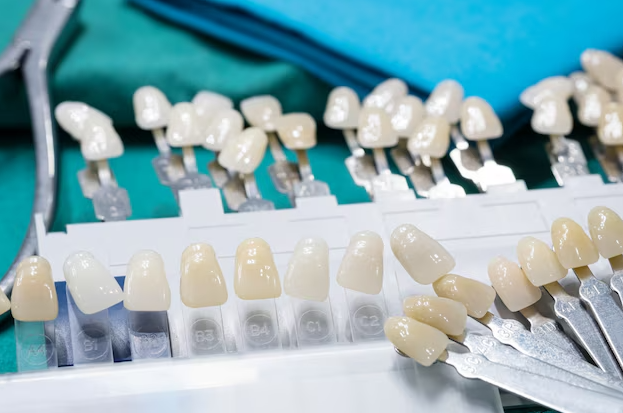
The Composite Filling Procedure
Composite fillings are an effective way to treat cavities while maintaining a natural look.
This section provides a detailed guide to the composite filling procedure, covering the steps involved, decay removal, hardening of the material, and pain management.
Step-By-Step Explanation Of The Composite Filling Procedure
- Numbing the tooth:
Your dentist may start off the procedure by numbing the tooth with local anaesthesia to ensure you feel no pain or sensitivity throughout. This is especially for tooth with deep decay. - Decay Removal:
To ensure the composite filling adheres well to your tooth, removing all soft tooth decay is critical. The dentist uses a rotating drill to remove the soft decayed part of the tooth, creating a clean area. - Preparation:
The cavity is shaped to ensure the composite filling fits properly. An etching gel is applied to slightly roughen the tooth surface for better adhesion. - Bonding and Layering:
A bonding agent is applied, followed by the composite resin in layers. Each layer is hardened using a special blue light. - Shaping and Polishing: Once the resin is fully applied and hardened, the dentist shapes and polishes the filling to match your natural tooth.
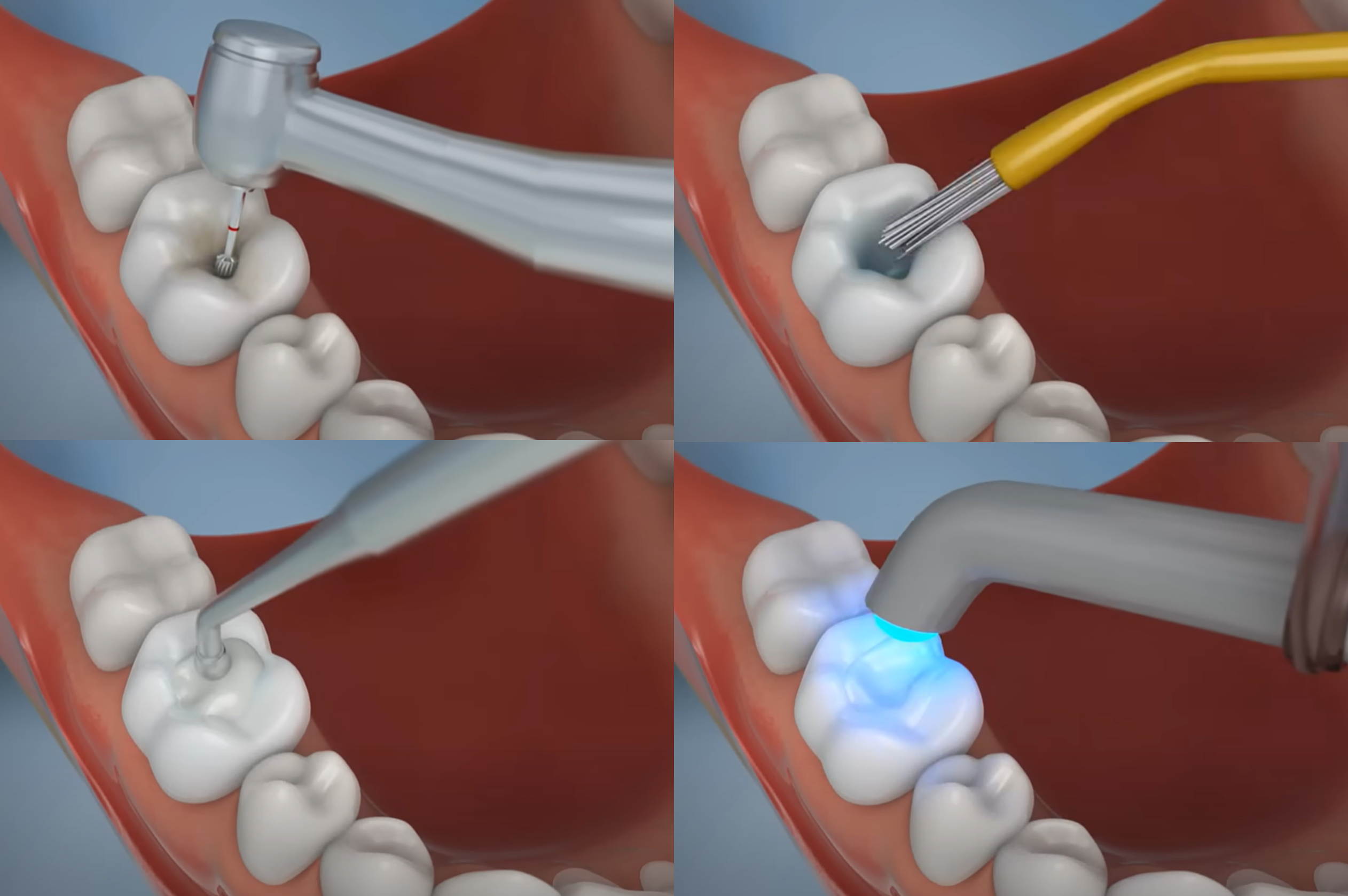
Pain Management And Comfort During The Procedure
Pain and discomfort are common concerns, but modern techniques make the procedure relatively comfortable.
Dentists use local anaesthesia to numb the area, ensuring you don’t feel pain.
Sometimes, patients may feel slight pressure or vibration from the dental tools, but this is generally not painful. If you feel uncomfortable at any point, let your dentist know so they can adjust their approach.
After the procedure, any discomfort is usually minimal and easily managed with over-the-counter pain relievers.
Proper anaesthesia and modern techniques make the composite filling procedure as painless as possible.
Comparison With Other Fillings
Composite fillings are often compared to other types of dental fillings like amalgam and resin fillings.
Understanding the differences can help you make the best choice for your dental needs.
Composite Fillings Vs. Amalgam Fillings
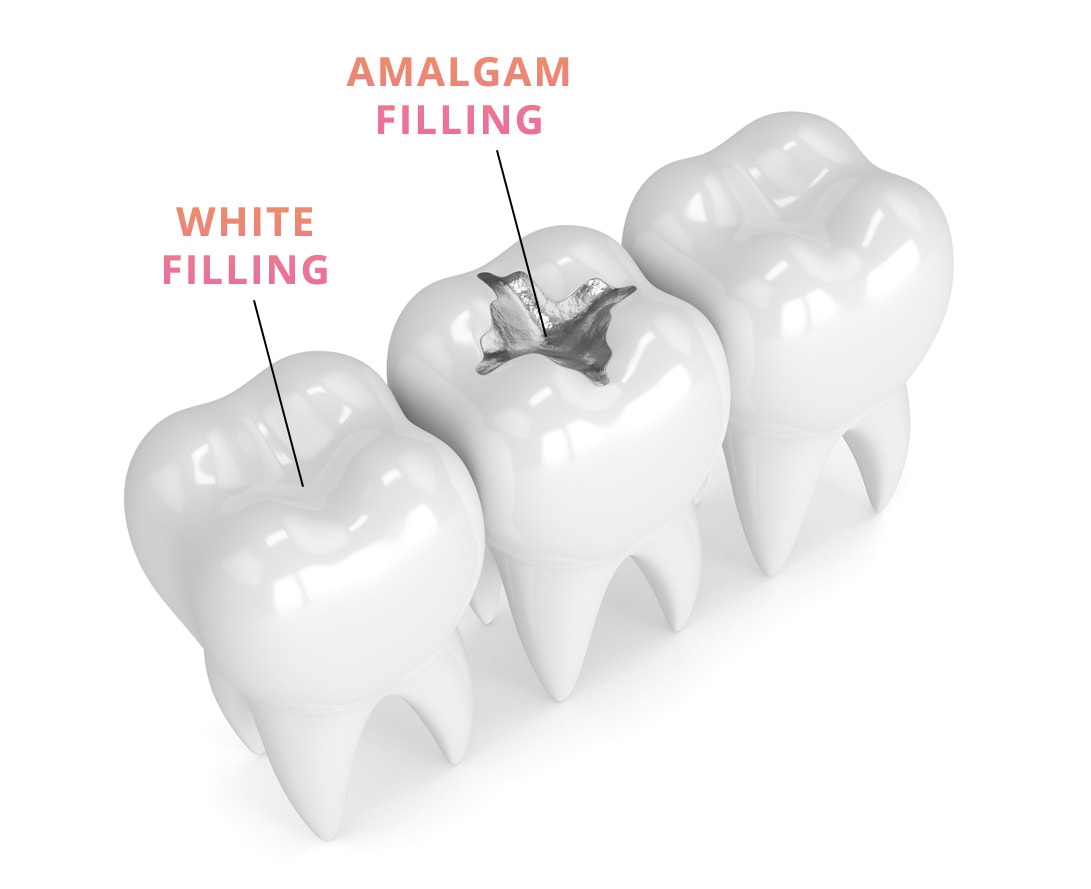
Composite fillings are made from composite resin, providing a natural look similar to the colour of your teeth.
Amalgam fillings, commonly referred to as silver fillings, are made from a mixture of metals, including silver and mercury.
One significant advantage of composite fillings is their aesthetic appeal, blending seamlessly with your natural teeth.
On the other hand, amalgam fillings are highly durable and tend to last longer.
Amalgam fillings are more cost-effective compared to composite fillings. However, they contain mercury, which some people prefer to avoid.
When it comes to strength and longevity, amalgam fillings generally have a proven track record, but composite fillings are improving and can now last many years.
Composite Fillings Vs. Glass Ionomer Cement (GIC)/ Resin-modified glass ionomer cement (RMGIC) Fillings
Even though all 3 of these materials are tooth coloured, they have different compositions and properties.
- Composite Fillings:
These are tooth-coloured, aesthetically pleasing, and bond well to teeth.
They are durable and commonly used in both front and back teeth, lasting 5-7 years or more. However, they do not release fluoride and are more expensive.
Composite material is also more sensitive to moisture, thus requiring good isolation from moisture such as saliva in order to achieve good bonding to tooth surface. - GIC Fillings:
GIC chemically bonds to teeth and releases fluoride, helping prevent future decay.
It’s ideal for temporary restorations, children’s teeth, or low-stress areas but lacks durability and aesthetic appeal compared to composites. - RMGIC Fillings:
A hybrid of GIC and composite fillings, RMGIC offers improved durability, bonding, and aesthetics compared to GIC, along with fluoride release.
While not as strong or visually appealing as composites, it’s suitable for moderate-stress areas or patients at high risk of decay.
Durability And Longevity Of Composite Fillings
Composite fillings are valued for their natural look and good performance.
While they are not as long-lasting as metal fillings, with proper care, they offer a reliable solution.
How Long Composite Fillings Last With Proper Care
Composite fillings can last anywhere from 5 to 7 years or even more with good care.
Factors affecting this lifespan include the quality of the material and the size of the filling. Smaller fillings tend to last longer because they face less stress during chewing.
Proper oral hygiene, including brushing and flossing, plays a significant role in extending the lifespan.
Regular dental check-ups also help in catching any issues early, keeping the fillings in good shape. You should consult your dentist for personalized advice on maintaining your fillings.
Impact Of Constant Stress And When To Consider Replacement
Constant stress from chewing or grinding can wear down composite fillings faster. If you have a habit of grinding your teeth, discuss it with your dentist.
They might recommend a night guard. Signs that your filling might need replacement include sensitivity, discoloration, or visible cracks.
If you experience any of these, schedule a visit to your dentist.
Composite fillings are generally durable, but over time, the materials can weaken, making replacement necessary.
Aftercare And Maintenance
Proper aftercare is crucial for the longevity and effectiveness of composite fillings.
Key considerations include good oral hygiene practices, regular dental check-ups, and managing any sensitivity that may arise.
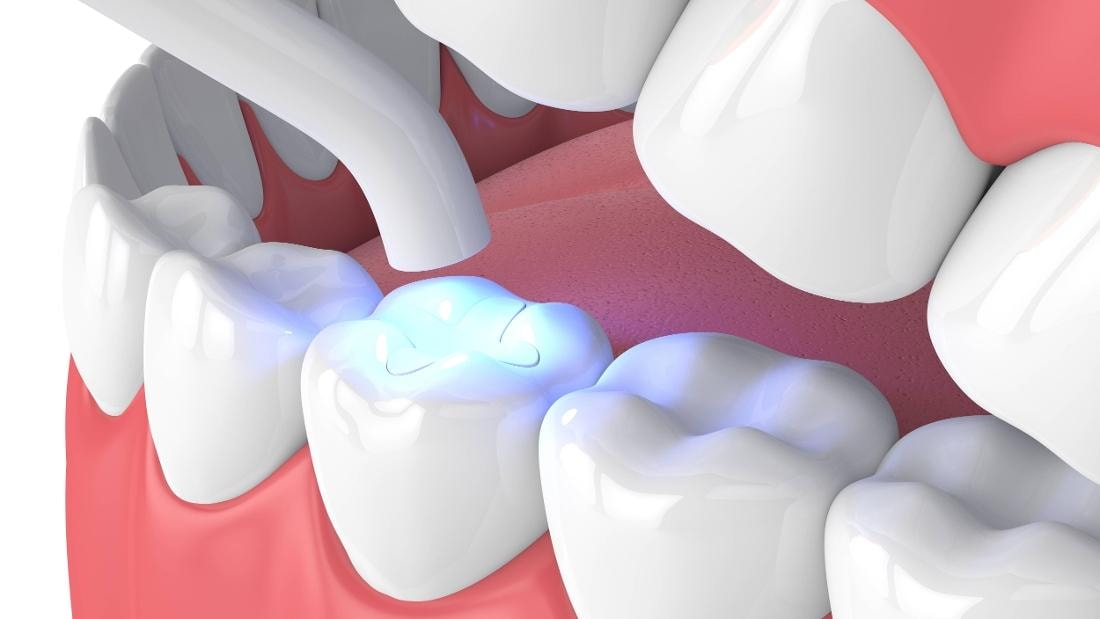
How To Care For Your Composite Fillings
Brushing and Flossing:
Brush your teeth at least twice a day with fluoride toothpaste to remove plaque and prevent decay around the filling. Floss daily to clean between your teeth and near the gum line.
Diet Considerations:
Avoid sticky or hard foods that can dislodge or damage the filling. Limit sugary foods and drinks to prevent decay.
Chewing and Biting:
Be mindful of chewing hard objects like ice or nuts. Use the opposite side of your mouth to chew if possible.
Managing Sensitivity:
If you experience sensitivity to hot or cold foods, use desensitizing toothpaste and avoid extreme temperatures in your diet.
Importance Of Regular Check-Ups
Assessing Fillings:
Regular dental check-ups are essential to ensure the integrity of your composite fillings. Your dentist can polish the fillings and check for any signs of wear or decay.
Professional Cleaning:
A professional cleaning can help remove any plaque or tartar build-up that brushing and flossing may miss.
Oral Examination:
Regular check-ups also allow for early detection of other dental issues that may require attention, such as cavities, gum disease, or cracked teeth.
Addressing Common Concerns
Pain and Sensitivity:
Mild discomfort or sensitivity is common after getting a composite filling. Pain relievers like paracetamol or ibuprofen can help manage this.
Eating and Drinking:
Even though composite filling material harden immediately with the special blue light, it is generally recommended to wait a couple of hours till the numbness from local anaesthesia wears off before eating to avoid accidentally biting your cheek or tongue.
Chewing Difficulties:
Chewing should be done carefully at first to avoid putting pressure on the new filling. Avoid hard and sticky foods until you feel comfortable.
Appearance:
Composite fillings blend with your natural teeth, making them aesthetically pleasing. However, be mindful that staining can occur from foods like coffee, tea, and red wine.
By following these recommendations, you can ensure that your composite fillings remain in good condition, providing you with a healthier and brighter smile.
Cost of Composite Dental Fillings
At Ocean Dental, our charges for composite filling ranges from $75 to $180 before GST.
The exact price depends on the complexity of each case, such as the location of the decay and size of the cavity.
In some cases, a dental rubber dam may be required for better isolation of the tooth in order to achieve good moisture control for better bonding of composite material to your tooth structure.
In such case, the charges for composite filling done under rubber dam isolation ranges from $150 to $250 before GST.
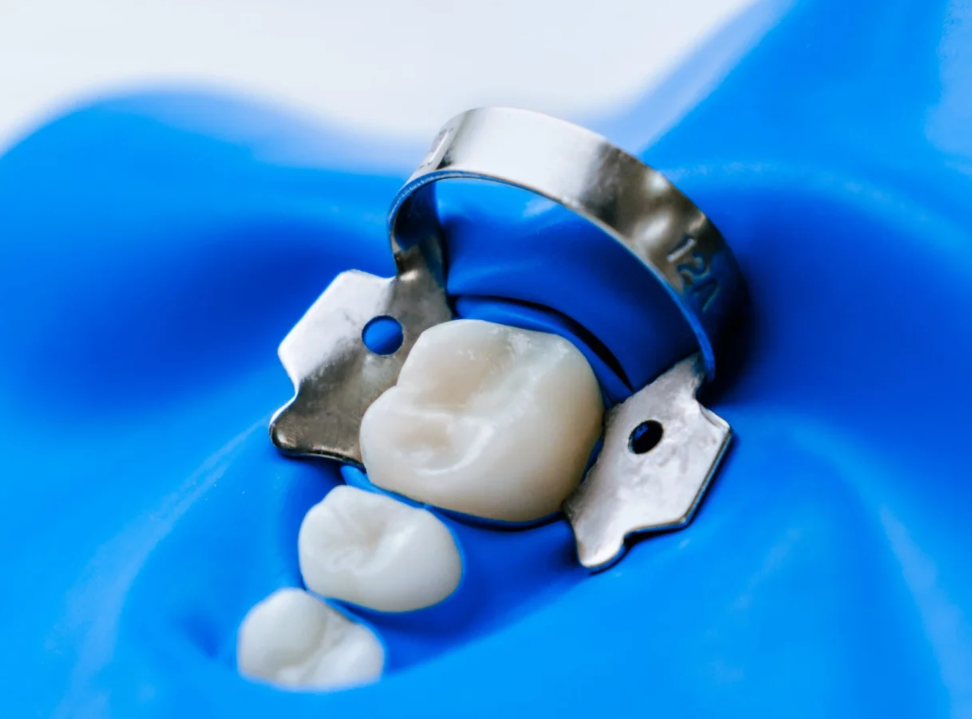
Conclusion
Composite fillings offer numerous advantages for dental health, from aesthetic appeal to durability.
It is vital to consult with a dentist to determine the best course of action for your dental needs.
Recap Of The Benefits Of Composite Fillings
Composite fillings are designed to blend seamlessly with your natural teeth.
Their tooth-coloured material makes them particularly suitable for visible areas. This aesthetic benefit underscores their appeal for those concerned with the appearance of their smile.
These fillings are durable and resilient, capable of withstanding the daily wear and tear experienced by teeth.
Composite fillings also provide a functional benefit by restoring the tooth’s shape and strength. Due to advancements in materials science, they are more biocompatible and less likely to cause allergic reactions.
Encouragement To Consult With A Dentist
Seeing a dentist for a consultation will allow you to discuss whether composite fillings are right for you.
A professional dentist can provide insights tailored to your unique dental condition.
Your dentist will evaluate the severity of your tooth decay or damage and recommend the most suitable treatment options.
Consulting with a dentist also ensures that your procedure is carried out safely and effectively.
Regular check-ups can catch problems early, making treatments more manageable and less invasive.
Schedule A Consultation Or Check-Up
Regular check-ups can prevent minor issues from becoming significant problems!
Taking the first step toward better dental health is as simple as scheduling a consultation.
To explore whether composite fillings are right for you, contact us at 6266 3011 or WhatsApp us at 9636 6118

